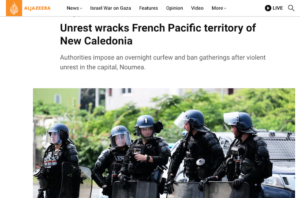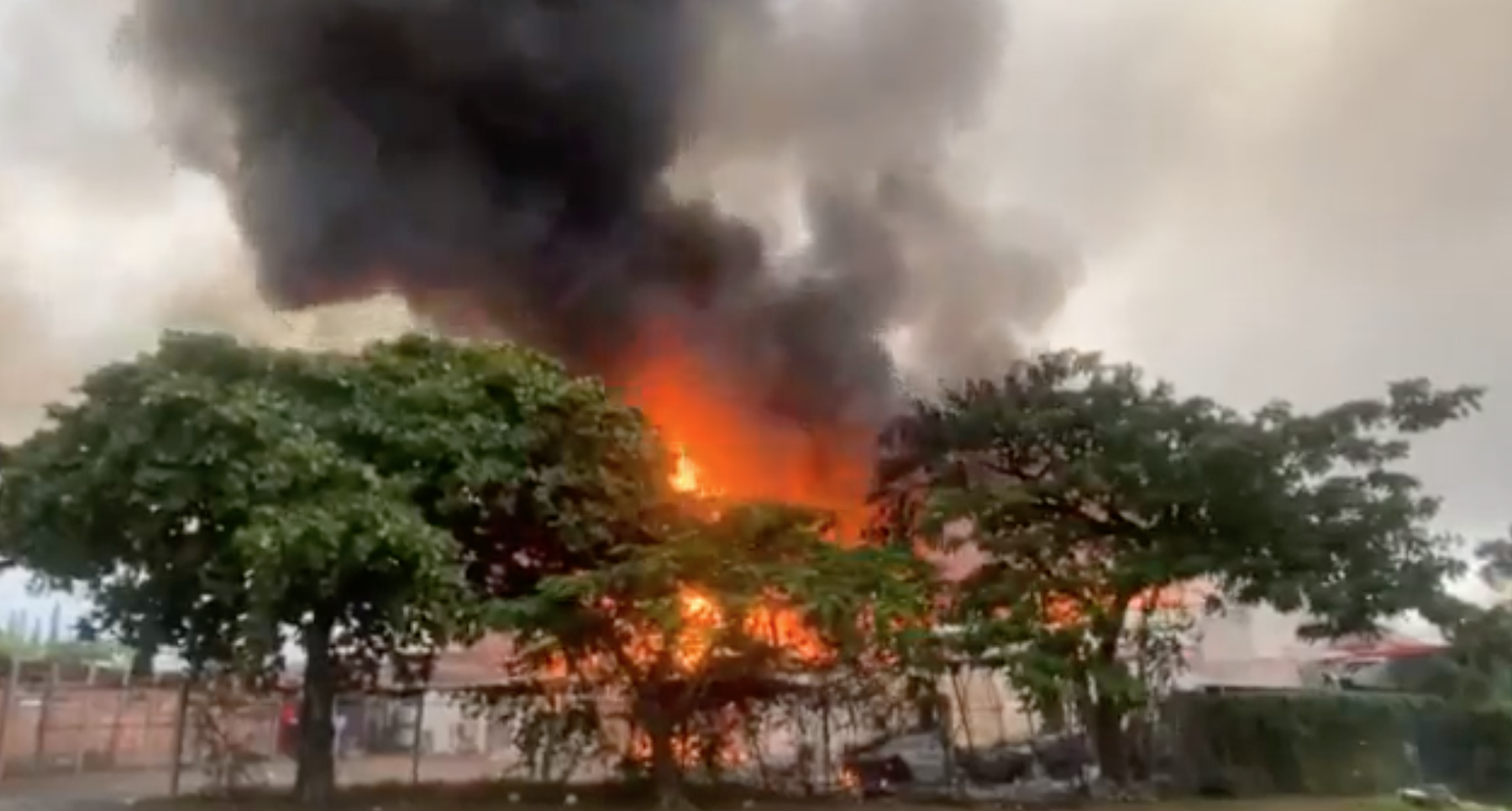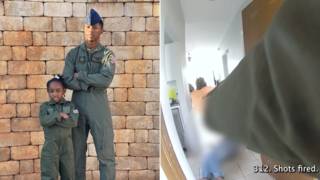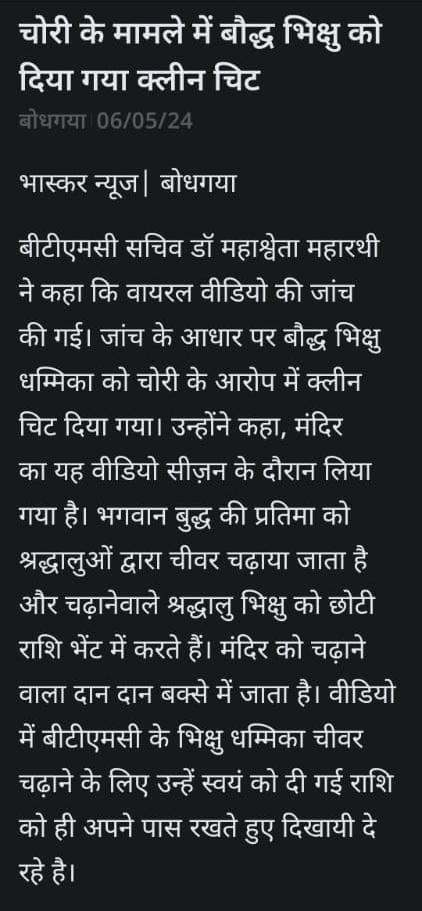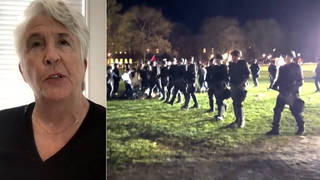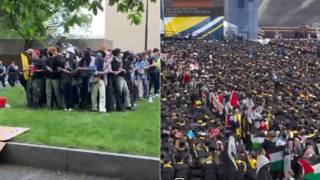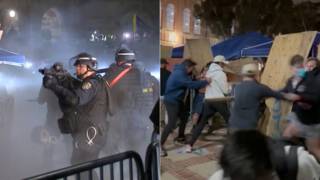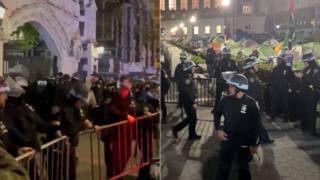During the summer of protests that followed the Minneapolis police murder of George Floyd in May 2020, journalists and readers alike began taking a hard look at how much news reporting relied on police sources. In particular, the standard use of “police said” articles—where the main or only source of information came from law enforcement—was leading the media to publish information that was outright wrong.

Journalists learned some lessons from the Black Lives Matter protests (Washington Post, 6/30/20)—and promptly forgot them.
In their first media statement on Floyd’s death, Minneapolis police claimed that officers had observed Floyd “suffering medical distress and called for an ambulance”; it was only when cellphone video emerged that it was reported that police were in fact kneeling on Floyd’s neck at the time (NBC News, 5/26/20). To many, it was all too familiar a pattern: Five years earlier, the Baltimore Sun (4/24/15) had based its reporting on the police killing of Freddie Gray almost entirely on official police statements, downplaying eyewitness reports that officers had thrown Gray headfirst into a van shortly before he died of neck injuries.
“What the police tell you initially is a rumor,” Mel Reeves, an editor at the then-86-year-old African-American newspaper the Minnesota Spokesman-Recorder told the Washington Post (6/30/20). “And a lot of the times it’s not accurate.” CNN (6/6/20), in a report on how camera footage often ended up disproving police claims, went further: “Videos from several recent incidents, and countless others from over the years, have shown what many Black Americans have long maintained: that police officers lie.”
Yet four years later, when protests broke out on college campuses calling for universities to divest from companies that support the Israeli government’s campaign of killing civilians in Gaza, US media forgot those lessons—and ended up repeatedly misinforming readers as a result.
‘Trying to radicalize our children’

Nahla Al-Arian could more accurately described as a retired elementary teacher visiting the campus that her journalist daughter graduated from.
The morning after the New York Police Department arrested 282 people at Columbia University and the City College of New York during protests against Israel’s war in Gaza, MSNBC’s Morning Joe (5/1/24) welcomed New York City Mayor Eric Adams and NYPD deputy commissioner of public information Tarik Sheppard as its sole guests. “At what point was it known to you that this was something more [than students] and that there were people who maybe had plans for worse than what some of the students were up to?” MSNBC anchor Willie Geist asked Adams. The mayor replied:
We were able to actually confirm that with our intelligence division and one of the individual’s husband was arrested for and convicted for terrorism on a federal level…. These were professionals that were here. I just want to send a clear message out that there are people who are harmful and are trying to radicalize our children.
Co-anchor Mika Brzezinski nodded in approval. When Adams added, “I don’t know if they’re international, we need to look into that as well,” Brzezinski softly said, “Yes.”
The story of the terrorist’s wife had first been put forward by city officials the previous evening, when CBS New York reporter Ali Bauman posted on Twitter, now rebranded as X (4/30/24; since deleted, but widely screenshotted), that “City Hall sources tell @CBSNewYork evidence that the wife of a known terrorist is with protestors on Columbia University campus.” At 1:47 am, CNN (5/1/24) issued a “breaking news” alert identifying the couple, Nahla and Sami Al-Arian, and showing a photo of Nahla on campus that Sami had posted to Twitter.
The next morning, Jake Offenhartz of the Associated Press (5/1/24) tracked down this “professional” agitator: Nahla Al-Arian was a retired elementary school teacher, and Sami a former computer engineering professor at the University of South Florida. He had been arrested in 2003 at the behest of then–US Attorney General John Ashcroft and charged with supporting the group Palestinian Islamic Jihad. After spending two years in jail awaiting trial, he was acquitted on all but one charge (a jury was deadlocked on the remaining count), and eventually agreed to a plea deal in which he and his wife moved to Turkey.
Nahla Al-Arian had visited the protests a week earlier with her daughters, both TV journalists, one a Columbia Journalism School graduate. Nahla stayed for about an hour, she told the Intercept’s Jeremy Scahill (5/3/24), listening to part of a teach-in and sharing some hummus with students, then returned to Virginia, where she was visiting her grandchildren, when Columbia students occupied a university building and police moved in to make arrests.
‘Look at the tents’

“Look at the tents,” NYPD official Kaz Daughtry told Fox 5 (4/23/24). “They all were the same color, the same ones that we saw at NYU, the same ones that we see at Columbia.”
This wasn’t the first time the NYPD had alleged that outsiders were behind the campus protests. A week earlier, after the Columbia encampment had resulted in an earlier round of arrests at the behest of university president Minouche Shafik, Fox 5 Good Day New York (4/23/24) brought on Sheppard and NYPD Commissioner of Operations Kaz Daughtry as its guests. “The mayor is describing some of the people there as professional agitators,” said anchor Rosanna Scotto. “Are these just students?”
“Look at the tents,” replied Daughtry. “They all were the same color, the same ones that we saw at NYU, the same ones that we see at Columbia. To me, I think someone is funding this.”
After an opinion piece in the Wall Street Journal (4/24/24) asserted that “Rockefeller and Soros grants are subsidizing those who disrupt college campuses”— actually, one protestor at Yale and one at the University of California, Berkeley, were former fellows at a nonprofit funded by Soros’ Open Society Foundation and the Rockefeller Brothers Fund—the New York Post (4/26/24) wrote that “copycat tent cities have been set up at colleges including Harvard, Yale, Berkeley in California, the Ohio State University and Emory in Georgia—all of them organized by branches of the Soros-funded Students for Justice in Palestine.”
At the same time, as Wired (4/25/24) reported, dozens of Facebook and Twitter accounts had posted identical messages about the tents, saying: “Almost all the tents are identical—same design, same size, same fresh-out-of-the-box appearance. I know that college students are not that rich or coordinated.”
Snopes (4/29/24) later investigated the Post’s claims, and found no evidence that Soros had funded Students for Justice in Palestine. Meanwhile, Hell Gate (4/24/24) had checked Daughtry’s theory of a secret tent-funder through advanced data gathering: They googled it. As it turned out, there was a simpler explanation for why students across the city were using similar tents—they were the cheapest ones available online, for as little as $15. “My God,” reported the news site, “looks like what we’ve got on our hands is a classic case of college students buying something cheap and disposable.”
‘This is what professionals bring’

NYPD’s Tarik Sheppard presented as evidence of “outside agitators” a bike lock with the same Kryptonite logo as the locks sold by Columbia (photo: Christopher Robbins/Hell Gate).
The same Morning Joe appearance by Adams and Sheppard introduced another household item that, police claimed, was a clear sign of outsiders being behind the protests. “You brought in a pretty staggering visual,” Brzezinski said to Sheppard. After he spoke about how “outside agitators” wanted to “create discord,” she prodded him, “Tell us about this chain.”
Sheppard lifted up a heavy metal chain, which clattered noisily against his desk. “This is not what students bring to school,” he declared. (“Don’t think so!” replied Brzezinski.) “This is what professionals bring to campuses and universities…. And this is what we encountered on every door inside of Hamilton Hall.”
That night, Fox News (5/1/24) ran the clip of Sheppard brandishing the chain, with anchor Sean Hannity calling the situation “a recipe for disaster.” The New York Daily News (5/1/24) quoted Sheppard’s “not what students bring to school” statement as well, without any attempt to check its accuracy.
Almost immediately, the “professional” chain story began to unravel. Less than 20 minutes after the Morning Joe segment, New York Times visual investigations reporter Aric Toler (5/1/24) tweeted that the exact same chain was not only used by Columbia students, it was in fact sold by the university’s own public safety department, under its “Crime Prevention Discount Bike, Locker and Laptop Lock Program.” At an NYPD press conference later that morning, The City reporter Katie Honan then showed the school’s listing to Sheppard, who insisted, “This is not the chain.”
Toler later tweeted a photo comparing the two, which appeared almost identical. Hell Gate editor Christopher Robbins, who was at the press conference, provided FAIR with a still frame from a video showing that the chain presented by Sheppard was attached to a lock with the same Kryptonite logo as is advertised on the Columbia site.
‘Mastermind behind the scenes’

The NYPD’s Daughtry went on Newsmax (5/3/24) to hold up a copy of an Oxford University Press book as evidence that an unspecified “they” is “radicalizing our students.” Daughtry’s copy appears to be a facsimile; the actual book is four inches by six inches (Screengrab: Independent, 5/4/24).
Two days after Adams and Sheppard appeared on Morning Joe, Daughtry tweeted photos of items he said were found inside Hamilton Hall after the arrests, writing:
Gas masks, ear plugs, helmets, goggles, tape, hammers, knives, ropes and a book on TERRORISM. These are not the tools of students protesting, these are the tools of agitators, of people who were working on something nefarious.
That same day, Daughtry went on Newsmax (5/3/24; Independent, 5/4/24) and held up the cover of the book in question, Terrorism: A Very Short Introduction. “There is somebody—whether it’s paid or not paid—but they are radicalizing our students,” he declared. Police, he said, were investigating the “mastermind behind the scenes.” Right-wing news organizations like the National Desk (5/3/24) and the Center Square (5/6/24) immediately picked up on the report of the “disturbing” items, without speaking to either protestors or university officials.
The Terrorism book, it turned out, was part of an Oxford University Press series of short books—think “For Dummies,” but with a more academic bent—that was carried by Columbia itself at its libraries (Daily News, 5/4/24). Its author, leading British historian Charles Townshend, told the Daily News that he was disappointed the NYPD was implying that “people should not write about the subject at all.” The Independent (5/4/24) quoted a tweet from Timothy Kaldes, the deputy director of the Tahrir Institute for Middle East Policy: “How do you think we train professionals to work on these issues? No one at NYPD has books on terrorism? You all just study Die Hard?”
Media covering campus protests in the rest of the US similarly relied heavily on “police said” reporting, especially in the wake of the arrests of student protestors. CNN was an especially frequent perpetrator: Its report on mass arrests of protestors at Indiana University (4/25/24) ran online with the headline “At Least 33 People Detained on Indiana University’s Campus During Protests, Police Say,” and led with a police statement that students had been warned “numerous times” to leave their encampment, with the network stating blandly that “individuals who refused were detained and removed from the area.” Students later told reporters that they had been hit, kicked and placed in chokeholds by police during their arrests, and an Indiana State Police official confirmed that one officer had been placed on a rooftop with a sniper rifle (WFIU, 4/29/24).
The following week, CNN (5/1/24) reported on “violent clashes ongoing at UCLA” by citing a tweet from the Los Angeles Police Department that “due to multiple acts of violence,” police were responding “to restore order.” In fact, the incident turned out to be an attack by a violent pro-Israel mob on the student encampment (LA Times, 5/1/24). News outlets have a history of using terms like “clashes” to blur who instigated violence, whether by right-wingers or by the police themselves.
‘”Police said” not shorthand for truth’

Student journalists have largely been able to cover the encampments without relying on police forces to tell them what reality is (New York Focus, 5/2/24).
Law enforcement agencies, it’s been clear for decades, are unreliable narrators: It’s why journalism groups like Harvard University’s Nieman Foundation (10/27/22) have called for news outlets to stop treating police statements as “neutral sources of information.”
Following the murder of George Floyd, the Washington Post (6/30/20) wrote that “with fewer reporters handling more stories, the reliance on official sourcing may be increasing.” It quoted Marshall Project editor-in-chief Susan Chira as saying that police should be treated with “the same degree of skepticism as you treat any other source…. ‘Police said’ is not a shorthand for truth.”
There are, in fact, plenty of ways to report on the arrests of protestors without relying on the word of police officials: The Columbia Spectator (5/4/24), the Columbia radio station WKCR-FM and Columbia Journalism School students (New York Focus, 5/2/24) all contributed reporting that ran rings around the officially sourced segments that dominated the professional news media, despite a campus lockdown that at times left them unable to leave classroom buildings to witness events firsthand.
They found that Columbia protestors who occupied Hamilton Hall—described by Fox News (4/30/24) as a “mob of anarchists” — had in fact been organized and nonviolent: “It was very intentional and purposeful, and even what was damaged, like the windows, was all out of functionality,” one photographer eyewitness told the Spectator, describing students telling facilities workers, “Please, we need you to leave. You don’t get paid enough to deal with this.’
Sueda Polat, a Columbia graduate student, told the Spectator:
One officer had the nerve to say, “We’re here to keep you safe.” Moments later, they threw our friends down the stairs. I have images of our friends bleeding. I’ve talked to friends who couldn’t breathe, who were body-slammed, people who were unconscious. That’s keeping us safe?
It was a stark contrast with what cable TV viewers saw on MSNBC, where, as Adams and Sheppard wrapped up their Morning Joe segment, Brzezinski thanked them for joining the program, adding, “We really appreciate everything you’re doing.”
That’s no wonder: If you only talk to one side in a dispute, you’re more likely to end up concluding that they’re the heroes.
The post On Campus Gaza Protests, Media Let Police Tell the Story—Even When They’re Wrong appeared first on FAIR.
This post was originally published on FAIR.
